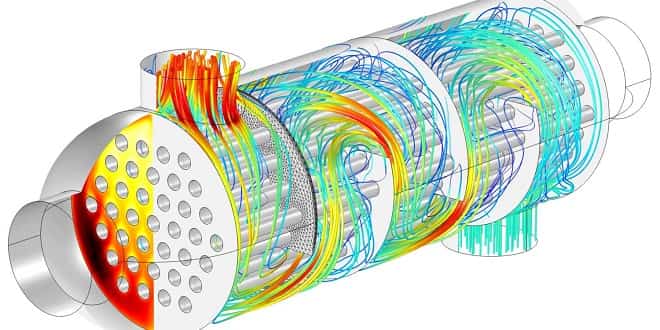Shell and Tube Heat Exchanger
Shell and tube heat exchangers are among the more confusing pieces of equipment for the process control engineer. The principle of operation is simple enough: Two fluids of different temperatures are brought into close contact but are prevented from mixing by a physical barrier. The temperature of the two fluids will tend to equalize. By arranging counter-current flow it is possible for the temperature at the outlet of each fluid to approach the temperature at the inlet of the other. The heat contents are simply exchanged from one fluid to the other and vice versa. No energy is added or removed.
Since the heat demands of the process are not constant, and the heat content of the two fluids is not constant either, the heat exchanger must be designed for the worst case and must be controlled to make it operate at the particular rate required by the process at every moment in time. The heat exchanger itself is not constant. Its characteristic changes with time. The most common change is a reduction in the heat transfer rate due to fouling of the surfaces. Exchangers are initially oversized to allow for the fouling which gradually builds up during use until the exchanger is no longer capable of performing its duty. Once it has been cleaned it is again oversized.
…




